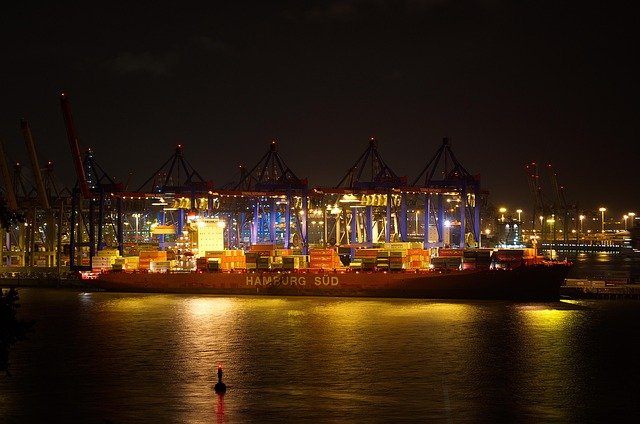Like so much of an iceberg is hidden underwater, much of a tree is hidden underground. While the trunk and branches and leaves sequester planet-warming carbon dioxide, trees and other plants have long formed subterranean alliances with mycorrhizal fungi, which intertwine with their roots to establish a mutually beneficial trade network. In exchange for helping everything from oaks to redwoods find water and essential nutrients like nitrogen, the fungi get energy, in the form of carbon that their partners have pulled from the atmosphere.
A whole lot of carbon, in fact: Worldwide, some 13 billion tons of CO2 flows from plants to mycorrhizal fungi every year — about a third of humanity’s emissions from fossil fuels — not to mention the CO2 they help trees capture by growing big and strong. Yet when you hear about campaigns to conserve and plant more trees to slow climate change, you don’t hear about the mycorrhizal fungi. Humanity may be missing the forest for the trees, in other words, in part because without going somewhere and digging, it’s hard to tell what mycorrhizal species are associating with what plants in a given ecosystem.
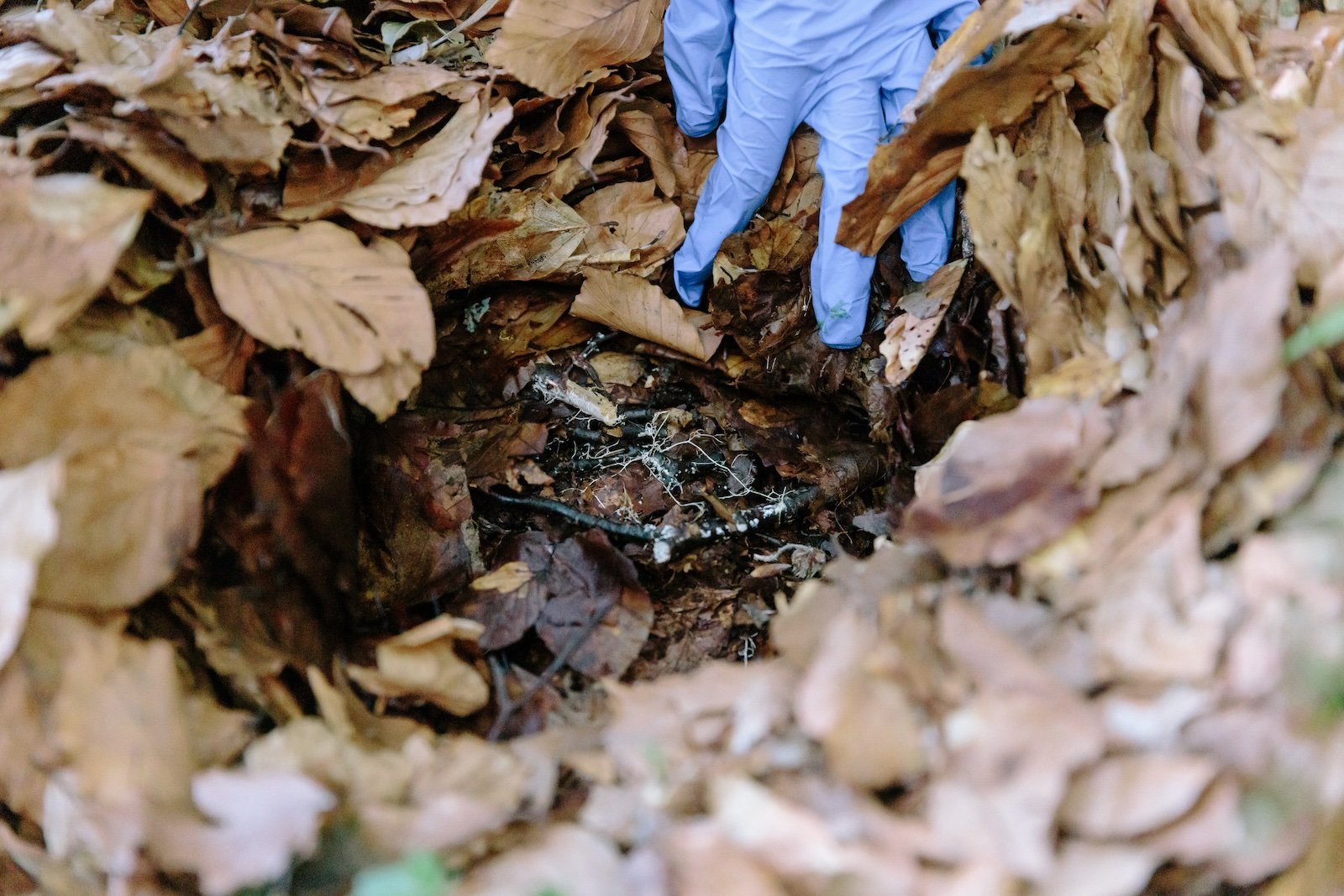
A new research project is trying to change that. The Society for the Protection of Underground Networks, or SPUN, has launched the Underground Atlas, an interactive tool that maps mycorrhizal fungi diversity around the world. It’s a resource for scientists and conservationists to better understand where to focus on protecting these species so they can keep sequestering carbon and provide other critical services in ecosystems. “We’ve known for a long time that these mycorrhizal fungi are very important in ecosystems, and that they exist all over the planet and partner with lots of different plants,” said fungal ecologist Michael Van Nuland, lead data scientist at SPUN and lead author of a new paper describing the work in the journal Nature. “But it’s been hard to match that sense of scale with large datasets or large-scale, high-resolution maps.”
To build this atlas, Van Nuland and his colleagues didn’t visit every square foot of vegetation on Earth and take soil samples, because they didn’t have to. Instead, they analyzed the DNA of mycorrhizal fungi samples from 130 countries. Because they knew the conditions where the samples were taken — local temperatures, precipitation, vegetation type, even the pH of the soil — they could teach a computer model to associate those characteristics with different species of fungi.
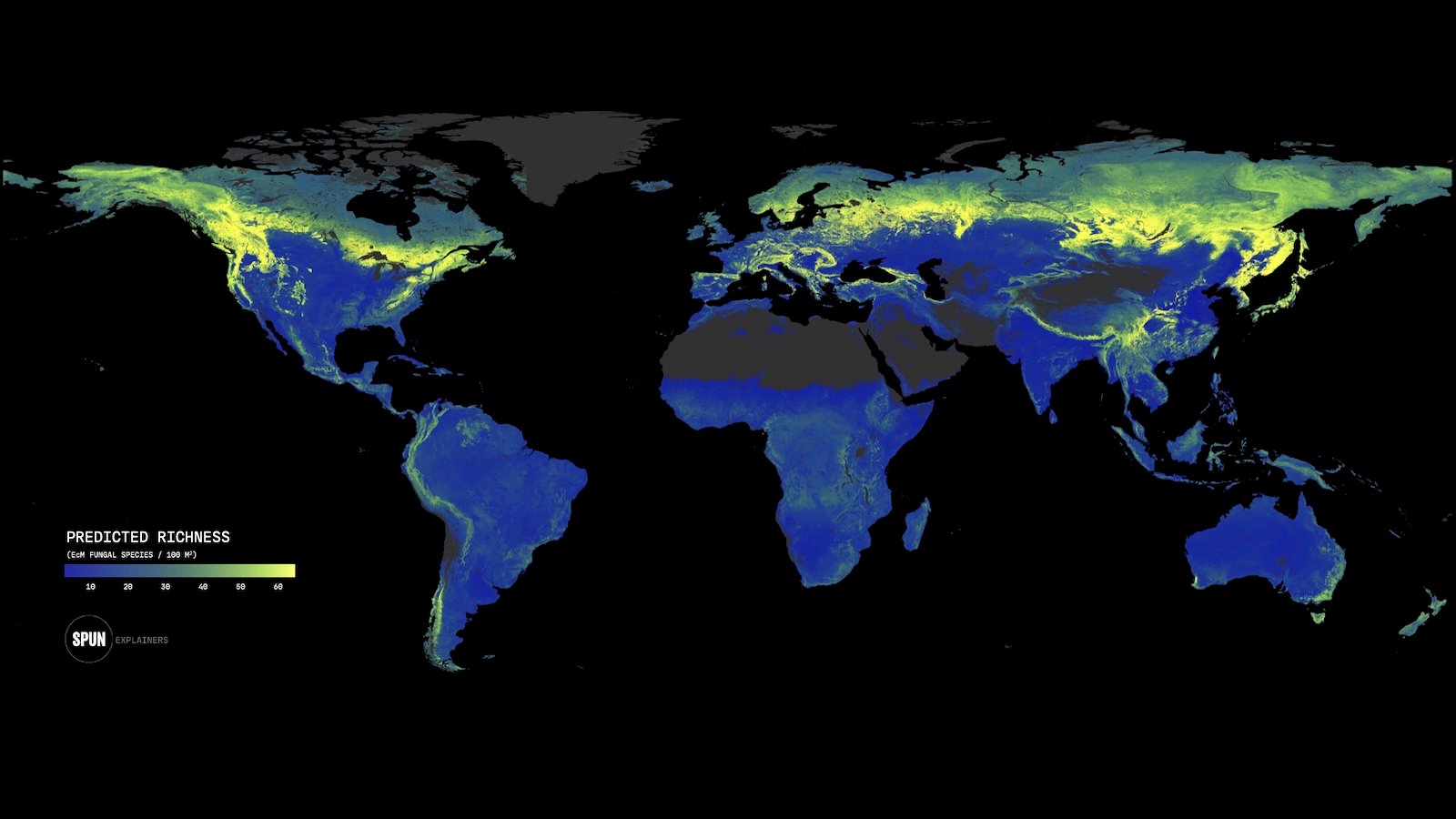
Now the system could predict what mycorrhizal species should live in a given place, even if scientists haven’t been at that exact spot to collect a sample. In the map above, brighter colors indicate a greater diversity of a group known as ectomycorrhizal fungi, which grow as sheaths around roots. Notice the glowing areas in the far north, which include boreal forests. “It is nice to see that their model recapitulates the patterns that we mostly know to expect of high diversity in those temperate boreal regions,” said fungal ecologist Laura M. Bogar, who studies ectomycorrhizal fungi at the University of California, Davis, but wasn’t involved in the research.
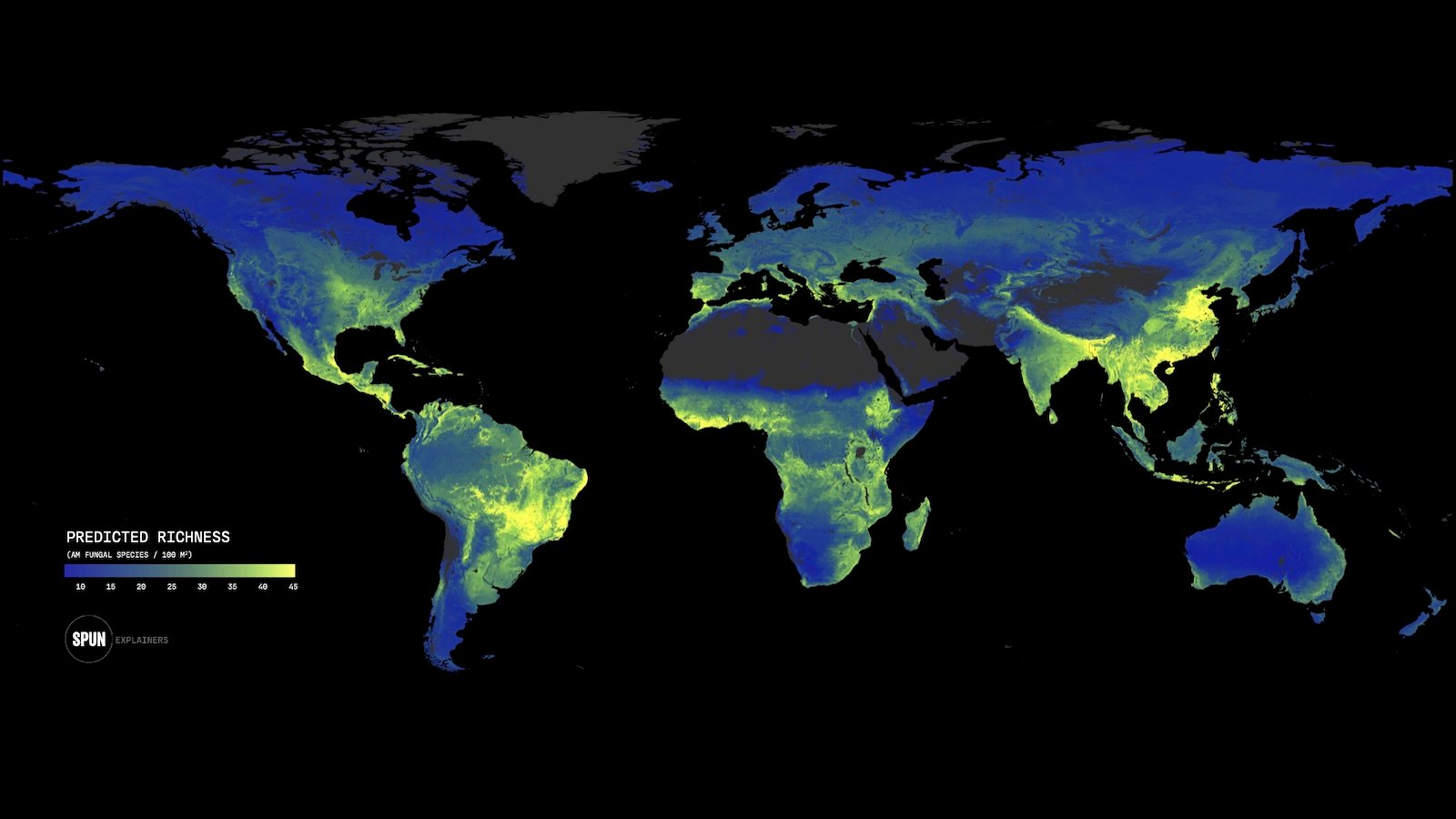
The map above inverts that dynamic. It shows the predicted richness of the second group, the arbuscular mycorrhizal fungi. (You can play with the map here. To toggle between the two groups, hit the button at lower right.) Instead of encasing the roots, these penetrate them. Notice their species richness beyond the boreal forests, especially in the tropics. Interestingly, an arbuscular fungi hot spot isn’t the Amazon rainforest, but the adjacent savanna in Brazil. “When you think where the hottest hot spots on the planet for biodiversity are, most people are going to think about the Amazon rainforest,” Van Nuland said. “But for this type of mycorrhizal fungal group, that’s in the surrounding ecosystem.”
Scientists are still working out what influences the global distribution of ectomycorrhizal and arbuscular fungi. Complicating matters, though, is the fact that the two groups can overlap in the same environments. Bogar, for instance, works in Northern California with Douglas fir trees, which have ectomycorrhizal fungi, and redwoods, which have arbuscular fungi. “Even though to me standing on the ground, they both look like just really tall, beautiful trees that probably have similar ecology,” Bogar said. “From the perspective of a fungus interacting with their roots, they’re profoundly different.”
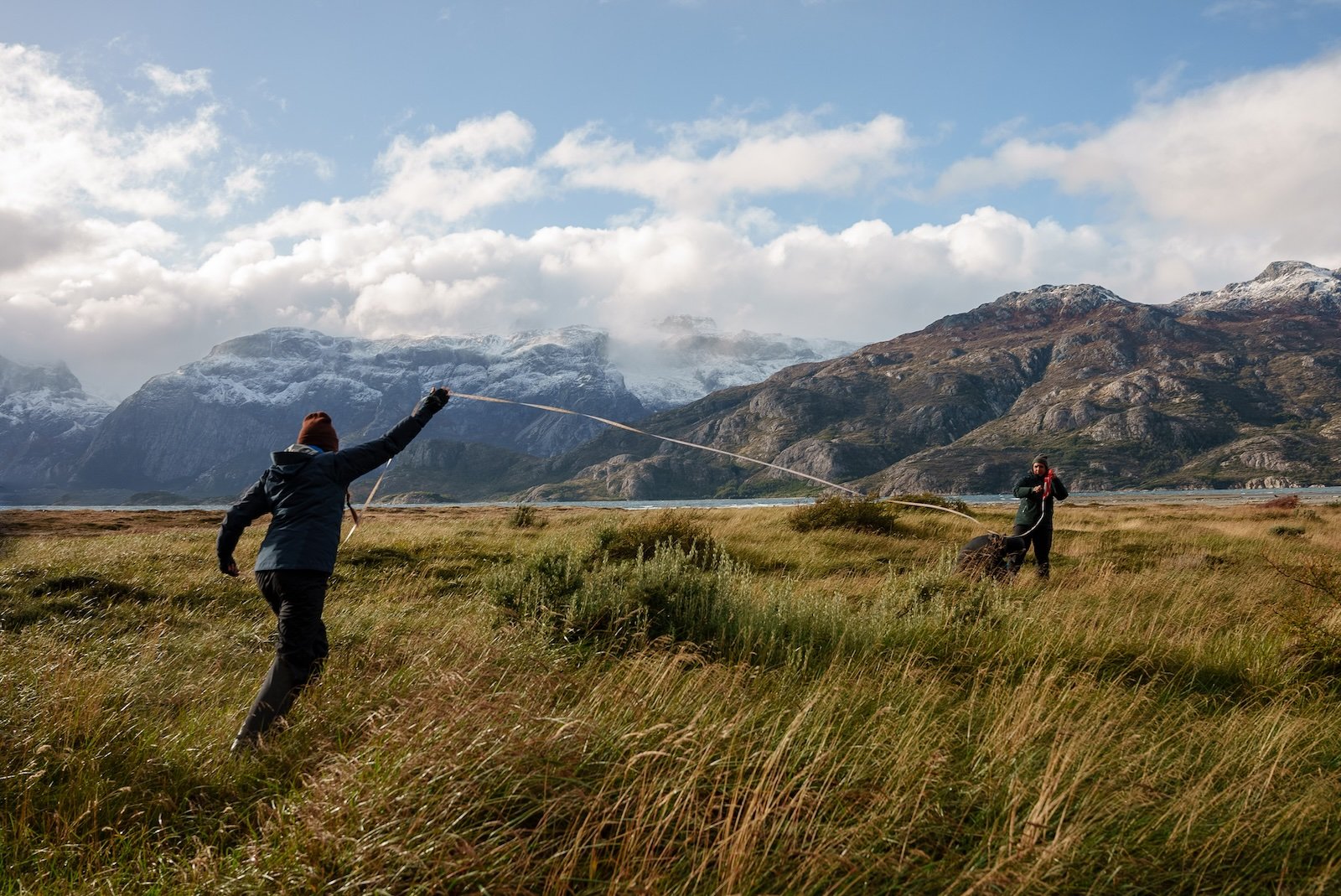
Mateo Barrenengoa
Globally, the researchers found that just 9.5 percent of fungal biodiversity hot spots lie within existing protected areas. If an area is deforested to make way for cattle grazing — a particularly acute problem in the Amazon — mycorrhizal fungi lose the partners they need for energy, and the planet loses a powerful symbiosis that naturally draws down carbon into soils. Without a robust population of fungi, nutrients leech out of the system, and soil erosion increases. “There are all these other cascading benefits, beyond just how much carbon physically goes into the bodies of the fungi,” Van Nuland said.
Not only do mycorrhizal fungi have to deal with humans degrading their habitats, but the climate around them is rapidly changing. Van Nuland and his colleagues included historical data in their model, which found that climates that were stable over long periods allowed unique and rare symbioses to evolve between plants and fungi. With the atmosphere now in flux — both with rising temperatures and worsening droughts — those unique symbioses may be at risk, imperiling both plant and mycorrhizal fungus.
Equipped with the atlas, scientists might be able to better prioritize where they venture in the field to study the fungi, Bogar said. Van Nuland, meanwhile, is trying to determine the best way to conserve these essential fungi, especially the biodiversity hot spots popping up on the map. “We don’t know if the same protection strategies work for mycorrhizal fungi like they do for plant and animal biodiversity,” Van Nuland said. “We are actively researching that right now.”

